Table of Contents
ToggleFew styles have endured the test of time and captured the imagination quite as much as geometric patterns have in the vast field of art and design. As a result of their inherent allure, order, symmetry, and precision have been widely used throughout history, and they have also continued to inspire creativity in a variety of fields until the present day. Geometric pattern design has left an indelible mark on human culture throughout history, from ancient civilizations to modern aesthetics. Creating a tapestry of creativity, harmony, and timeless beauty is what makes it so unique.
This geometric pattern design goes far beyond just being a visual delight; it holds a fascinating mystique that combines the symbolism of geometry with the mathematics of mathematics. Human minds have been fascinated by these designs for centuries because of the seamless blending of science and art in them. As a result of this, profound connections have been revealed between the human psyche, the universe, and the creative process. Explore the rich tapestry of meaning that geometric patterns bring to the human experience, as we delve deeper into the enchanting world of geometric patterns.
The Origins of Geometric Patterns
The roots of geometric patterns trace back to the dawn of human civilization. Archaeological discoveries have unearthed evidence of these intricate designs in ancient pottery, textiles, and architectural masterpieces. The Persians, Egyptians, Greeks, Romans, and Mesopotamians adorned their art with geometric motifs as expressions of their understanding of the cosmos, the natural world, and the divine.
One of the most iconic examples of early geometric pattern design can be found in Islamic-era art and architecture. These intricate, mesmerizing patterns, often devoid of representational figures, are symbolic representations of the infinite nature of the divine and the universe. The Islamic-era artists’ mastery of geometry and the mathematical precision in their creations have left an enduring legacy, influencing art movements across continents and centuries.
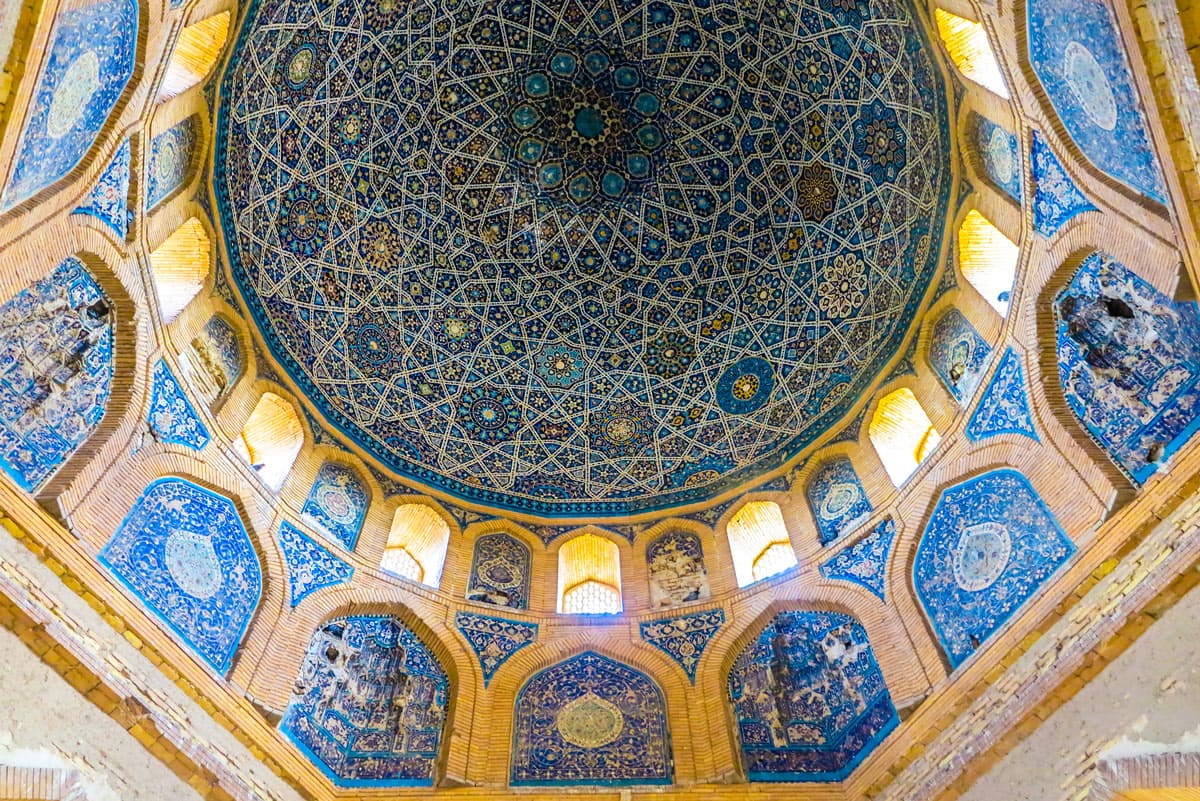
The Universality of Symmetry of Geometric Pattern Design
At the heart of geometric patterns lies the power of symmetry. Symmetry is inherent in the natural world, from the bilateral symmetry of plants and animals to the hexagonal symmetry of snowflakes. Humans find solace and beauty in symmetry, as it represents order, balance, and predictability. Geometric patterns, with their symmetrical arrangements, tap into this innate appreciation, transcending cultural boundaries and resonating with people across different backgrounds.
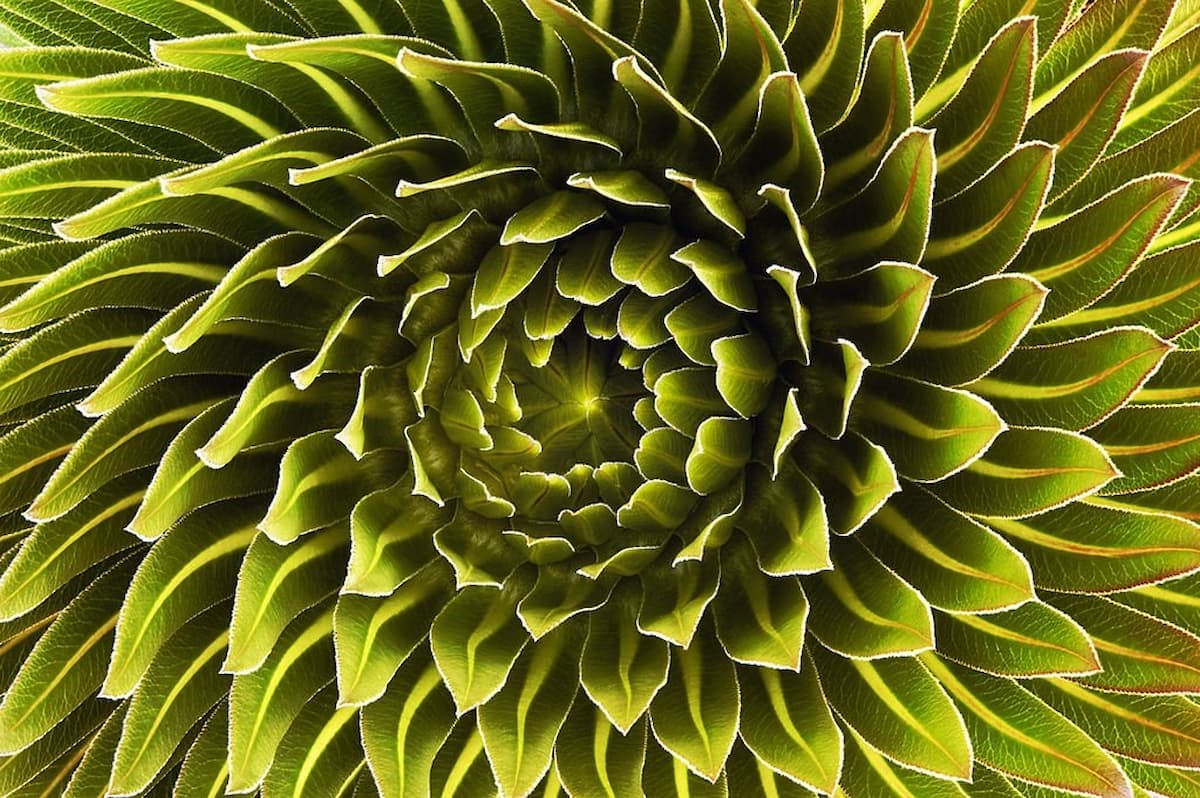
The Art of Creative Exploration of Geometric Pattern Design
While geometric patterns exude a sense of structure and control, they also offer boundless opportunities for creative expression. Designers and artists have the freedom to experiment with shapes, scales, colors, and compositions, allowing them to evoke a wide range of emotions and moods through their creations.
Some artists revel in the simplicity of basic geometric shapes, creating captivating designs with circles, squares, triangles, and lines. Others push the boundaries of complexity, crafting intricate and labyrinthine patterns that challenge the viewer’s perception and invite contemplation. The interplay of negative space and positive forms can lead to visually engaging and thought-provoking compositions.
Geometric patterns are versatile in application, adorning everything from textiles, ceramics, and jewelry to architectural facades, interior spaces, and urban landscapes. They serve as visual anchors that captivate attention, leaving a lasting impression on anyone who encounters them.
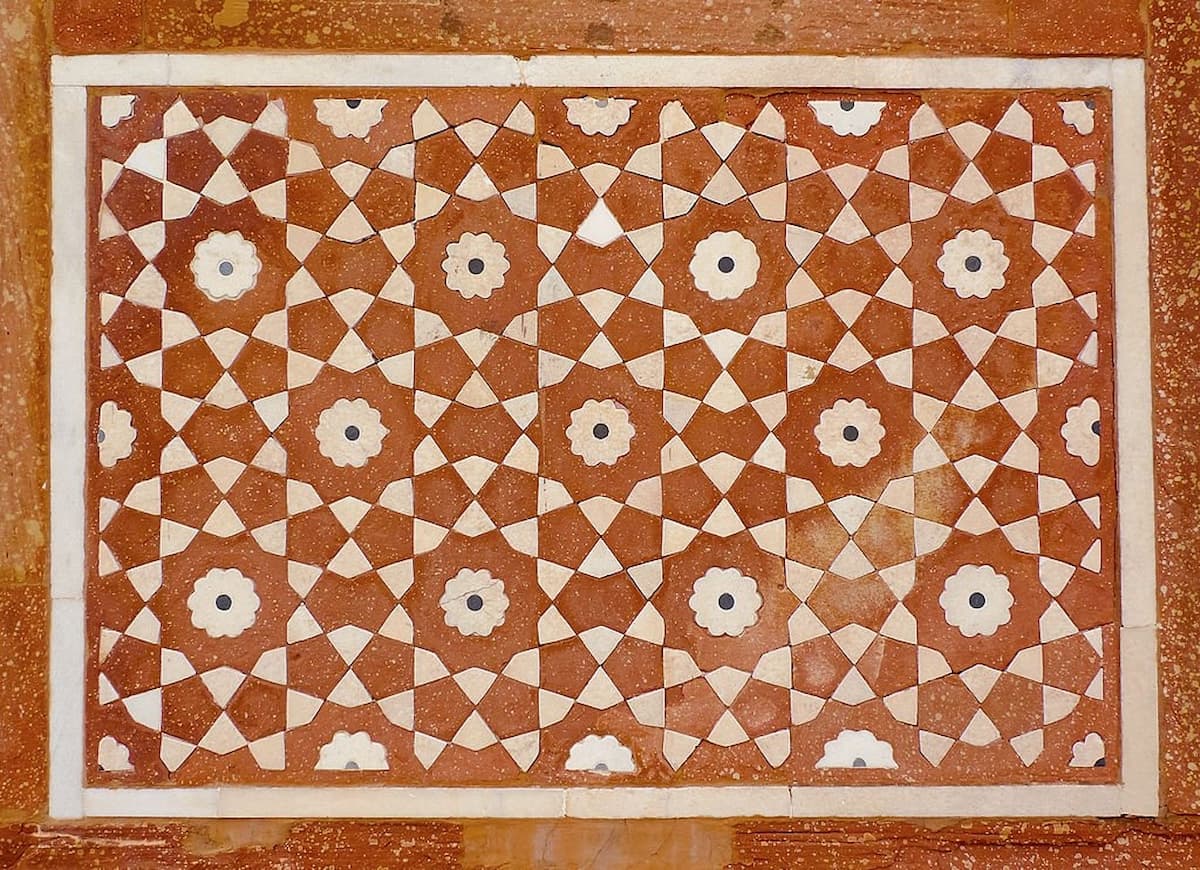
From Nature’s Blueprint to Human Canvas
Nature itself is a master of geometric design. The spiral of a seashell, the fractal patterns of a fern, and the honeycomb structure of beehives are all examples of the innate mathematical beauty that permeates the natural world. Human designers often draw inspiration from these patterns, incorporating elements of nature’s blueprint into their creations.
Geometric patterns in art often reflect the balance and interconnectedness observed in nature. By imitating the harmony found in the world around us, these patterns resonate with viewers on a deeply ingrained level, creating a sense of unity between the human-made and the natural.

Read more: Are you interested in muqarnas?
Traditional and Digital Approaches of Geometric Pattern Design
The evolution of technology has significantly impacted the creation of geometric patterns. Traditional methods, such as hand-drawing, stenciling, and tile-based designs, are still valued for their meticulous craftsmanship and artisanal appeal. Many cultures have preserved age-old techniques, passing them down through generations to maintain their cultural heritage.
In the digital age, computer-aided design (CAD) software and graphic editing tools have revolutionized geometric pattern design. Artists can now effortlessly experiment with different combinations, iterations, and transformations, allowing for unprecedented levels of precision and efficiency. Generative design algorithms have also gained popularity, enabling the automatic generation of complex and intricate patterns, pushing the boundaries of creativity and originality.

Geometric Patterns in Cultural Significance
Beyond their aesthetic appeal, geometric patterns often hold deep cultural and historical significance. These designs may serve as potent symbols representing a community’s values, beliefs, and identity. In some cultures, geometric patterns have been used to convey stories, myths, and spiritual teachings. When integrated into contemporary designs, they create a bridge between the past and the present, fostering a connection to ancestral roots.
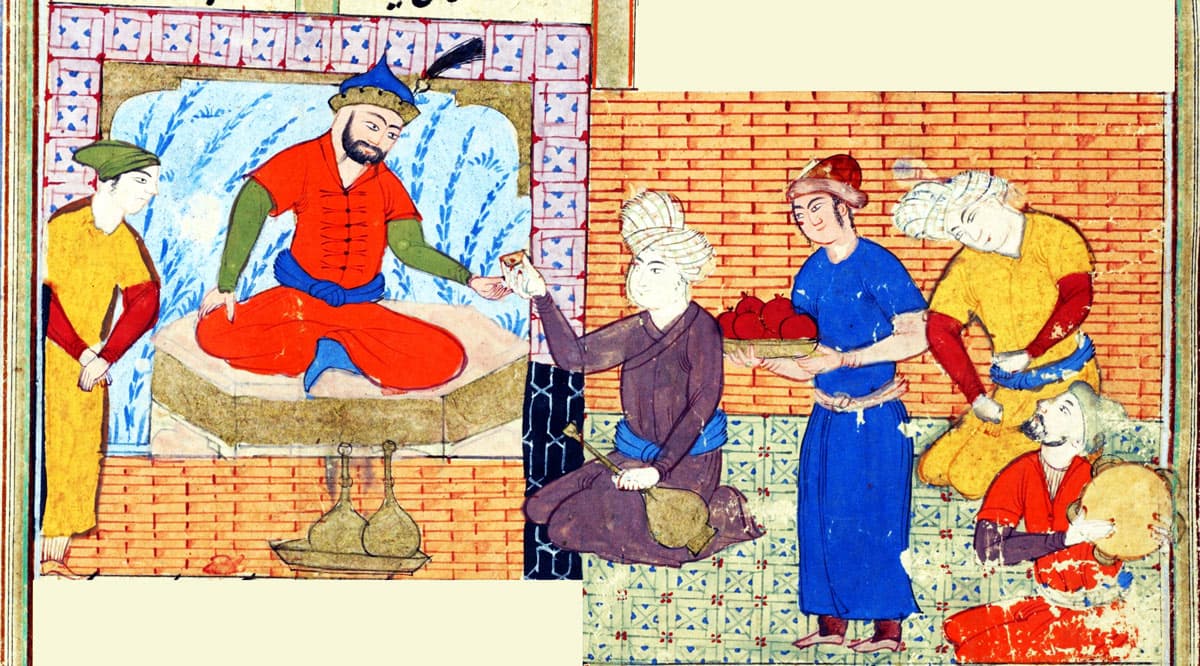
The Future of Geometric Pattern Design
As technology continues to advance, so too will the possibilities within geometric pattern design. Virtual and augmented reality may soon allow users to immerse themselves in dynamic, interactive patterns, offering an unprecedented sensory experience. Additionally, the integration of artificial intelligence (ai) and machine learning could lead to the creation of novel and innovative designs, breaking the barriers of human imagination.

The Language of Symbols in Geometric Pattern Design
Geometric patterns have served as a universal language, communicating complex ideas and emotions and transcending linguistic barriers. Across cultures and civilizations, these patterns have been imbued with symbolism, representing profound concepts such as eternity, unity, balance, and cosmic order.
Mandalas, for instance, are circular geometric patterns that have deep spiritual significance in various traditions. These patterns symbolize wholeness and unity, often used in meditation practices to aid in achieving a state of inner harmony. Similarly, the Flower of Life, an ancient symbol composed of overlapping circles, is seen as a blueprint of creation, representing the interconnectedness of all life.
Moreover, the use of geometric patterns in sacred geometry reveals the belief in the fundamental connection between mathematics and spirituality. The Golden Ratio, also known as the Divine Proportion, is a mathematical concept that appears in nature and has been employed by artists and architects to create aesthetically pleasing and spiritually resonant designs.
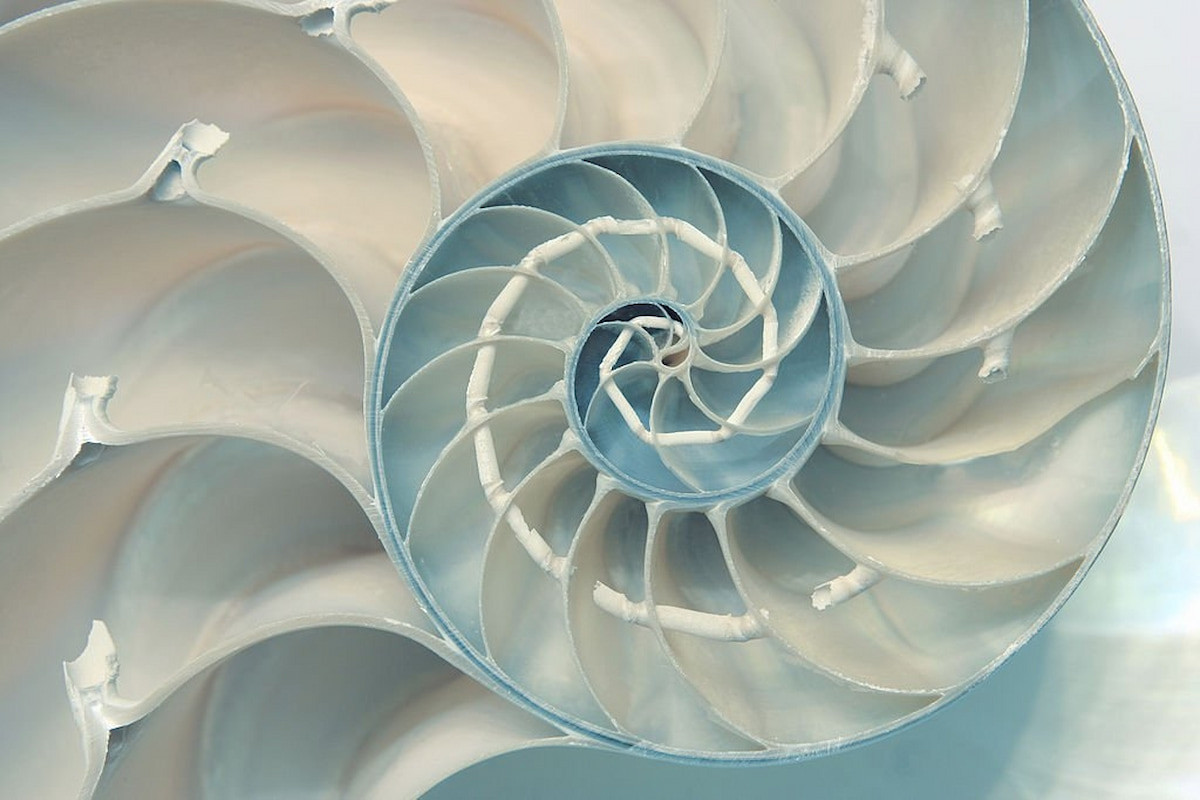
The Mathematics of Aesthetics of Geometric Pattern Design
The allure of geometric patterns lies not only in their symbolic significance but also in the mathematical precision that underpins their creation. Geometry, the study of shapes and their properties, has played a pivotal role in the development of art and design.
The precise measurements, angles, and ratios present in geometric patterns evoke a sense of order and perfection. The interplay between symmetry and asymmetry guides the viewer’s gaze and creates a visual harmony that is pleasing to the eye. Throughout history, artists and architects have utilized the principles of geometry to construct masterpieces that stand as testaments to human ingenuity.
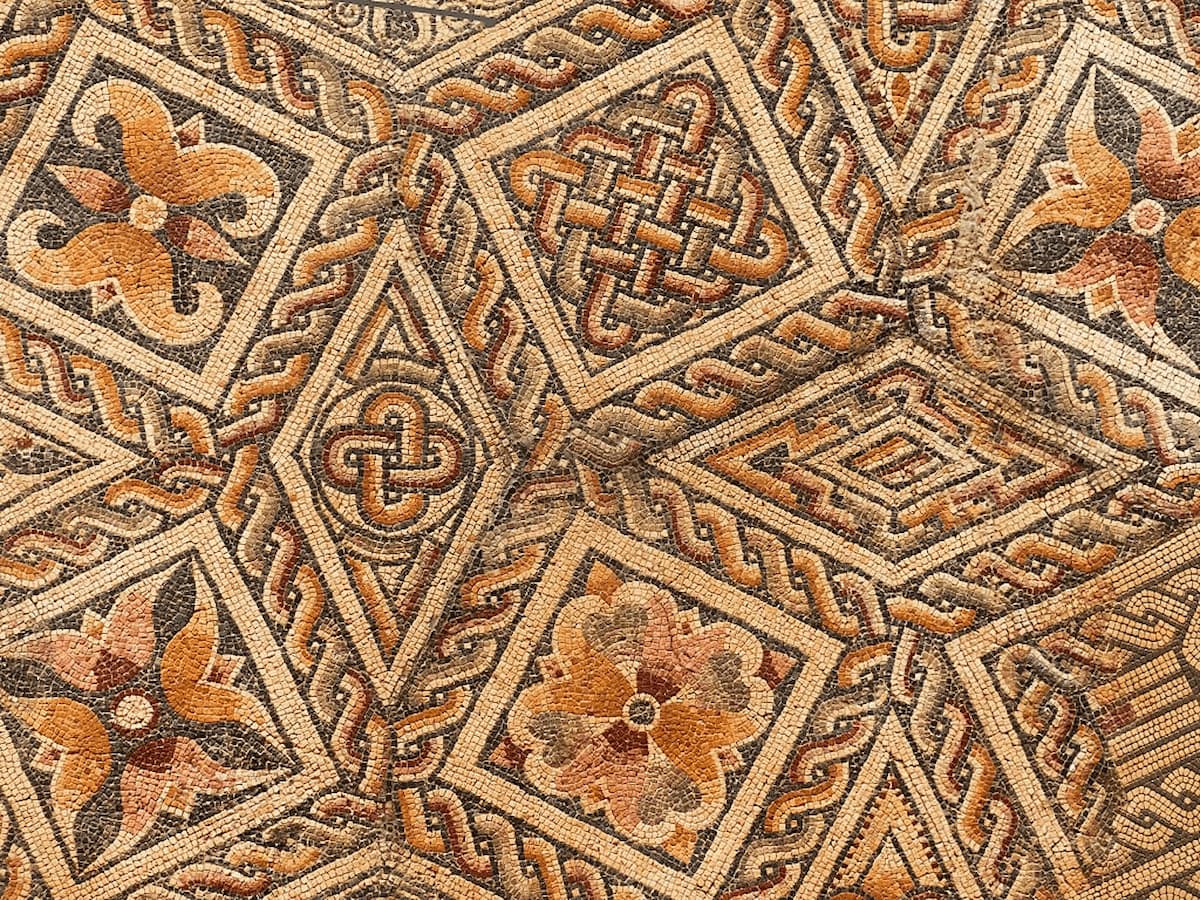
Read more: Islamic Wall Art
The Evolving Aesthetics of Geometric Patterns
The advent of modernism in the 20th century revolutionized the interpretation and application of geometric patterns. Artists like M.C. Escher explored the mind-bending possibilities of tessellations and optical illusions, blurring the line between reality and imagination. Escher’s intricate designs challenged viewers to perceive the world through a new lens, showcasing the artistic potential of mathematical precision.
In the realm of abstract art, geometric patterns took on new forms of expression. Artists such as Wassily Kandinsky and Piet Mondrian used geometric shapes and colors to convey emotions, spirituality, and the essence of the human experience. These pioneers of abstractionism believed that geometric forms could evoke a profound response from the viewer, tapping into universal truths and emotions beyond representation.

Geometric Patterns in Sculpture and Architecture
Geometric pattern design extends beyond the confines of two-dimensional surfaces. Sculptors and architects have embraced geometric principles to create awe-inspiring structures that integrate seamlessly with their surroundings.
In architecture, geometric patterns are often prevalent in the design of domes, arches, and facades. The rhythmic repetition of patterns creates a sense of unity and continuity, guiding visitors through spaces that feel both inviting and spiritually significant. From the mesmerizing tiles of Yazd Jameh mosque and Alhambra to the futuristic geometric structures of modern buildings, these designs leave an everlasting impression on the observer.
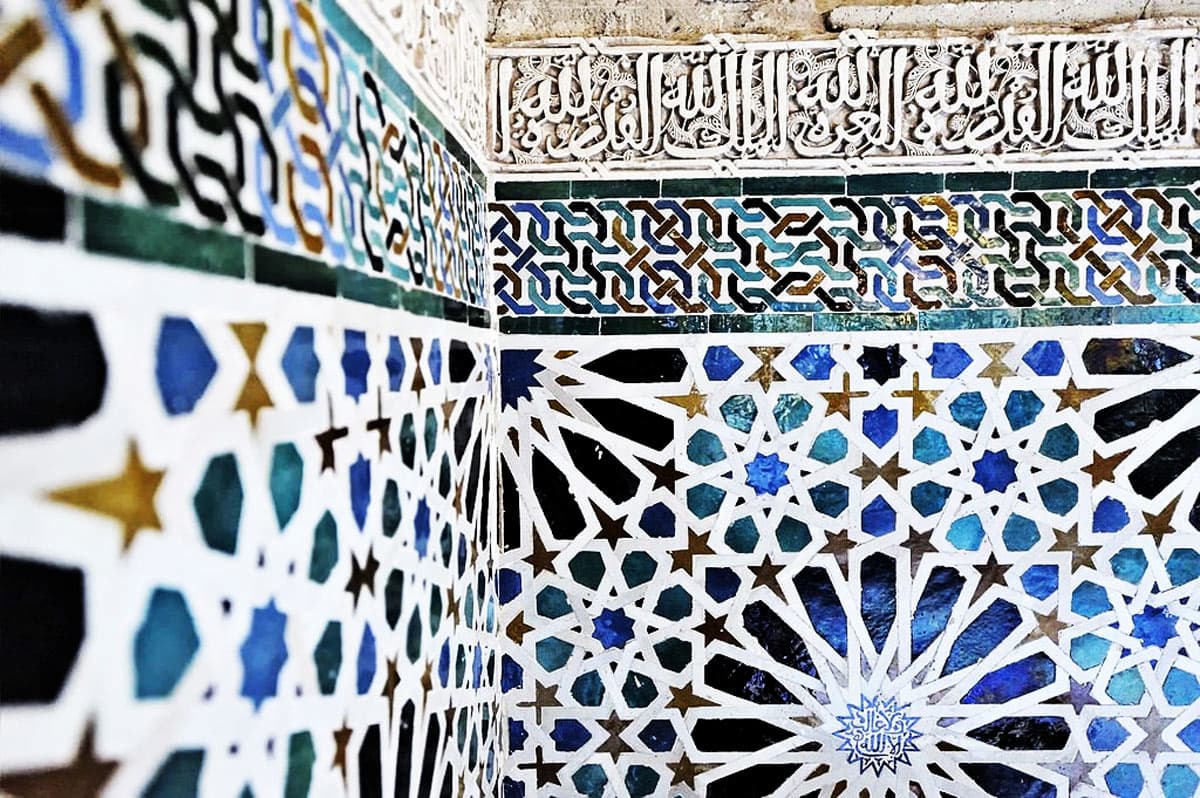
The Digital Renaissance and Exploring New Frontiers in Geometric Pattern Design
As we journey further into the digital era, geometric pattern design enters a new renaissance. Advancements in computer graphics and computational design enable artists to push the boundaries of complexity, producing mesmerizing patterns that were once inconceivable.
Generative design algorithms, driven by artificial intelligence, allow for the automatic generation of intricate patterns that challenge traditional artistic processes. These algorithms can explore vast design spaces, uncovering unique combinations and arrangements that expand the realm of creativity.
Moreover, the integration of 3D printing and virtual reality opens up new possibilities for immersive experiences with geometric patterns. Users can step into a virtual world where geometric designs transcend the confines of flat surfaces, wrapping around them in a mesmerizing dance of shapes and colors.
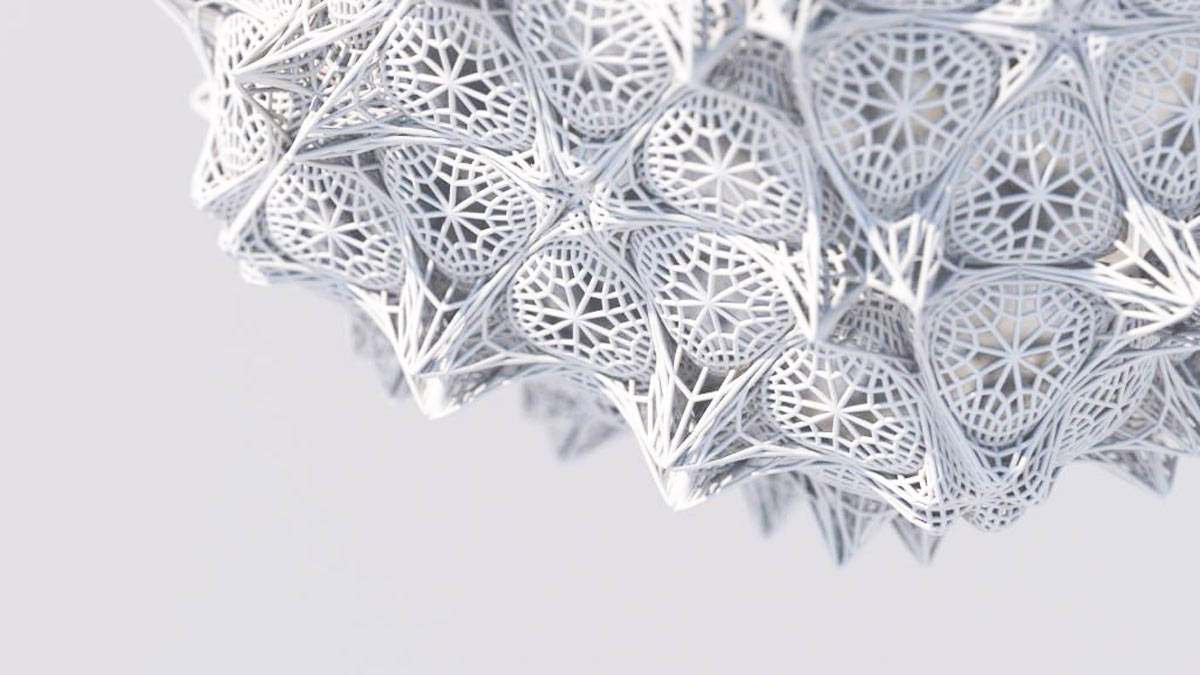
Islamic-era Geometric Patterns
Islamic geometric patterns, also known as Islimi khataei (Arabesque) or Islamic tessellation, are a remarkable manifestation of the rich artistic heritage of the Islamic world. These intricate designs are prevalent in Islamic art and architecture, spanning centuries and continents, from the Alhambra in Spain to the Taj Mahal in India. At the heart of Islamic-era geometric patterns lies a profound appreciation for the interplay of mathematics and spirituality. These designs are not merely decorative; they are symbolic representations of the divine and the infinite nature of the universe.
Islamic-era geometric patterns are characterized by their precision, symmetrical arrangements, and repetitive motifs. They often feature an exquisite blend of circles, squares, stars, and interlocking polygons that seamlessly weave together to create mesmerizing compositions. The patterns are meticulously crafted, following precise geometric rules and proportions, showcasing the Islamic world’s mastery of mathematical principles. The intricate beauty of these designs not only adorns religious buildings but also finds its way into calligraphy, textiles, ceramics, and even everyday objects. Islamic-era geometric patterns continue to inspire awe and admiration, serving as a testament to the profound connection between art, mathematics, and spirituality in the Islamic cultural tradition.
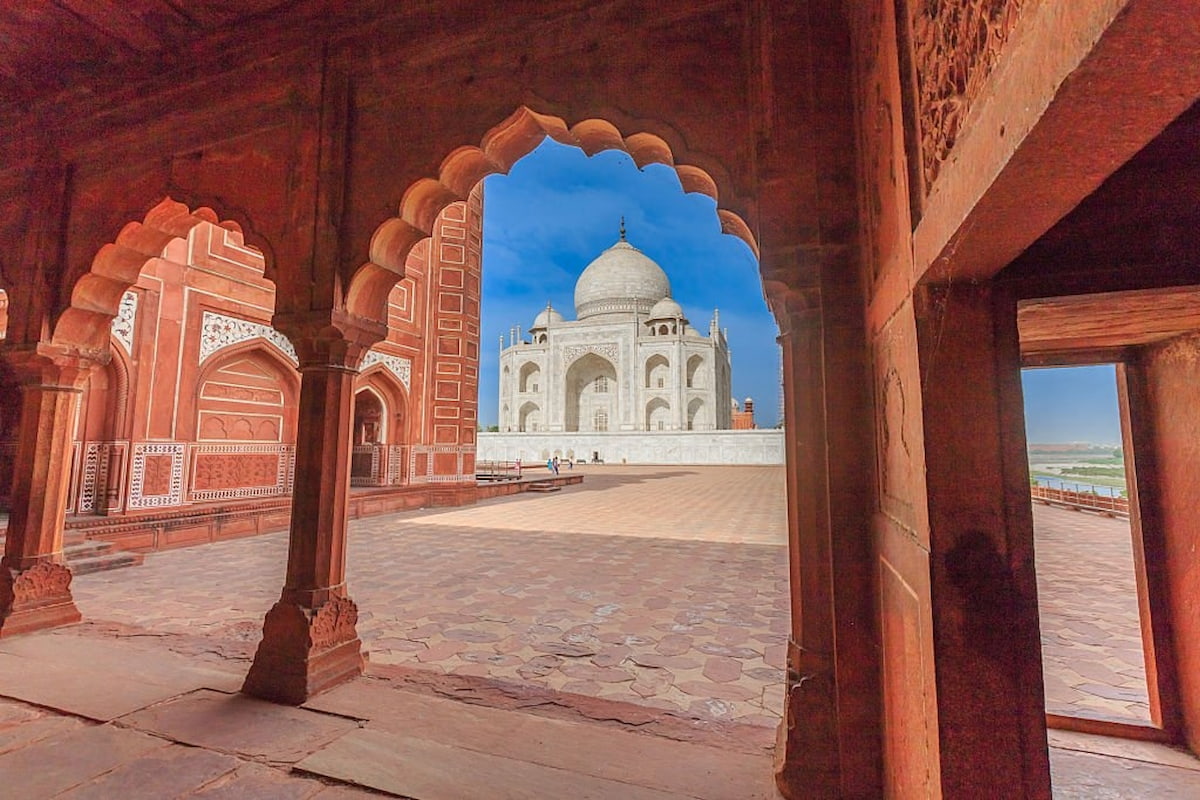
Conclusion
Geometric pattern design transcends the limitations of time, culture, and technology, leaving an indelible mark on human creativity. From the intricate geometries of ancient civilizations to the cutting-edge digital designs of the future, these patterns remain an enduring source of inspiration for artists, designers, and viewers alike.
The allure of geometric symmetry, the creative exploration of intricate designs, and the profound connection to the natural world continue to drive the popularity and significance of geometric pattern design. As we move forward, this timeless art form will continue to weave its way through our lives, reminding us of the elegance and harmony that can be found within the structured beauty of the geometric realm.
Geometric pattern design is an enchanting journey that unites the artistic and mathematical realms. From its ancient origins as symbols of spiritual significance to its contemporary exploration of aesthetics and technology, geometric patterns continue to inspire and captivate human imagination.
The interplay of symbolism, mathematics, and aesthetics in geometric patterns offers a profound glimpse into the intricacies of the human mind and its connection to the universe. As we continue to explore the boundless possibilities that technology brings, we embark on an infinite voyage of discovery, unlocking the mysteries of geometric pattern design and unraveling the threads that weave us together with the beauty of creation.
Frequently Asked Questions (FAQ) About Geometric Pattern Design
- What is the significance of geometric patterns in ancient civilizations?
Geometric patterns held great importance in ancient civilizations, serving as a means of communication beyond language. They were symbolic representations of cosmic order, eternity, and unity. In cultures such as Islamic art, these patterns were seen as reflections of the infinite nature of the divine. Geometric designs also adorned sacred spaces and artifacts, connecting the spiritual realm with the physical world.
- How does mathematics play a role in the creation of geometric patterns?
Mathematics is the backbone of geometric pattern design. Precise measurements, angles, and ratios are used to create visually appealing compositions. Symmetry, a fundamental mathematical concept, adds a sense of balance and harmony to these designs. The Golden Ratio, for example, is a mathematical proportion that appears in nature and is often used by artists and designers to create aesthetically pleasing patterns.
- How have modern artists expanded the use of geometric patterns?
In the 20th century, modern artists, such as M.C. Escher, and abstract painters like Wassily Kandinsky, pushed the boundaries of geometric pattern design. Escher explored tessellations and optical illusions, challenging viewers’ perceptions. Meanwhile, abstract artists used geometric shapes and colors to convey emotions and universal truths beyond representational art. This shift expanded the aesthetic and expressive potential of geometric patterns.
- What are some real-world applications of geometric patterns in architecture and design?
Geometric patterns have found applications in various fields, including architecture and design. In architecture, these patterns are evident in the design of domes, arches, and facades, adding a touch of elegance and continuity to the structure. Geometric patterns are also utilized in interior design, textiles, product packaging, and even urban landscapes, creating visually captivating and harmonious environments.
- How has technology influenced the evolution of geometric pattern design?
Advancements in technology, particularly in computer graphics and computational design, have revolutionized geometric pattern creation. Artists now have access to powerful tools that enable the exploration of complex and intricate designs. Generative design algorithms driven by artificial intelligence can automatically generate unique patterns that go beyond traditional artistic processes. Additionally, 3D printing and virtual reality have expanded the possibilities of experiencing geometric patterns in immersive and interactive ways.
